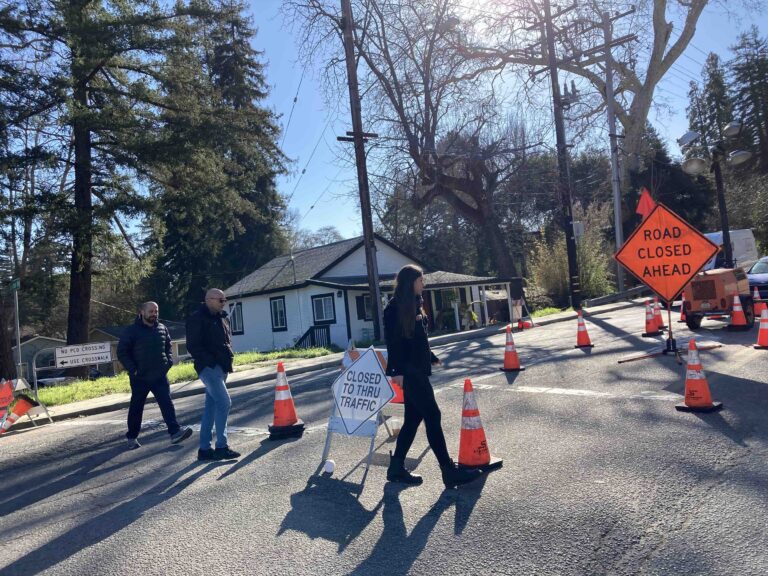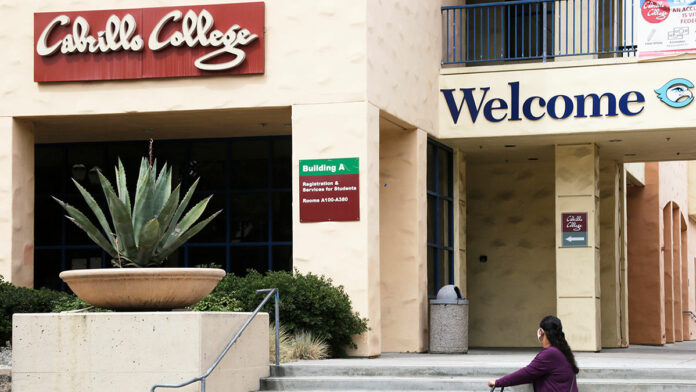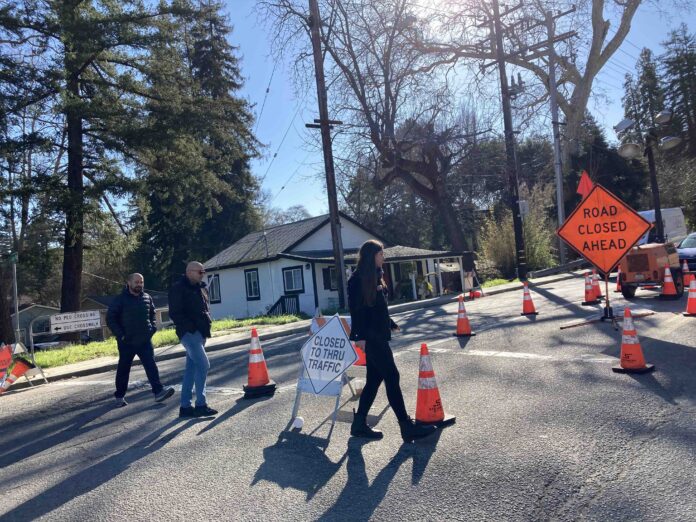The storms that wreaked havoc on Santa Cruz County earlier this month aren’t out of the blue: As Good Times reported in January, alternating periods of drought and deluge, the pattern we’re currently witnessing, is becoming California’s new norm thanks to climate change.
But Santa Cruz has a plan to curb that trend.
With its Climate Action Plan (CAP), the city lays out a plan that aims to limit its major carbon emission sources: the plan reduces the city’s contributions to the climate crisis by electrifying buildings and cars, improving public transportation, reducing waste and more.
On Tuesday, Jan. 24, the city took steps toward acting on the plan, approving a roadmap to decarbonize existing buildings. The city could start implementing measures by the end of the year.
What may be less clear is how the city chose its goals. Specific thresholds abound: electrifying 31% of existing residential buildings, getting 35% of drivers into electric vehicles and shifting in-city trips to 8% transit and 23% biking.
But the numbers aren’t arbitrary. Nor are the emissions sources they target or the strategies for achieving them. It comes from three key places: the state, science and the community.
A BROADER CONTEXT
California has statewide requirements to reduce greenhouse gas emissions to 40% below 1990 levels by 2030 and to achieve carbon neutrality by 2045. The CAP is designed, in part, to help Santa Cruz comply.
But, “according to science, we need to go much faster than what the current California target is,” says Dr. Tiffany Wise-West, the city’s Sustainability and Climate Action Manager. State goals, she says, aren’t aggressive enough to keep global warming under two degree Celsius compared to pre-industrial levels, the maximum level scientists and world leaders agreed to under the Paris Agreement in 2015. Earth has already warmed approximately 1.1 degrees.
To find a science-based target, Santa Cruz completed an inventory of its greenhouse gas emissions with the help of ICLEI, an international network of more than 2,500 local governments working for sustainable development.
“They actually compute for us what a science-based target might look like,” explains Wise-West, who served on the staff that created the CAP. “They look at our share of global emissions that need to be reduced in order to meet the Paris Climate Accord limitations.”
This resulted in the city’s target: carbon neutrality by 2035, 10 years ahead of the state goal.
To help Santa Cruz meet that goal, the CAP focuses on the city’s largest greenhouse gas sources, basing targets for each one on its share of city emissions. Chief sources include transportation (which alone contributes 69% of Santa Cruz’s emissions, the CAP reports) and energy use from homes and commercial buildings.
It’s not just about state compliance and mitigating climate change, though. Electrifying homes, for instance, can also keep us healthy.
Take the current hot-button issue of gas stoves. In terms of climate impact, annual methane emissions from gas stoves in the U.S. roughly amount to the carbon dioxide emissions of half a million gas-powered cars—and most of that happens while stoves are off, a study found.
But the same study notes that gas stoves also release respiratory irritants like nitrogen dioxide, which can lead to asthma. According to another study, gas stoves in California emit as much benzene—a carcinogen known to increase leukemia risk—as 60,000 gas-powered cars per year. In severe cases, household benzene pollution from gas stoves matches that of indoor tobacco smoking.
Electric and magnetic induction stoves eliminate these hazards while reducing the risk of house fires.
“Climate change, public health, safety and equity all go hand in hand,” Wise-West says. “I think electrification is a really good example of that.”
HELP WANTED
Setting goals is the easy part. Meeting them requires action.
The CAP designates a city branch to implement each goal. The city has a three-year work plan that defines how to put the CAP’s goals into practice, Wise-West says. And a partners’ roundtable program, launching early this year, will convene Santa Cruz METRO, the County Regional Transportation Commission and other partners to coordinate climate efforts.
Even so, Ronnie Lipschutz, a professor emeritus of politics at UC Santa Cruz who was not involved in the CAP, doubts whether the city can achieve everything the plan calls for.
“I think it is worth doing. But I think one has to be realistic,” Lipschutz says. He would prefer a plan focused on achieving what the city knows it will have funding for. Wise-West says the city will seek as much state and federal funding for its projects as possible.
Dustin Mulvaney, a professor of environmental studies at San Jose State University who was not involved in the CAP, likes the CAP’s ambitious design. He thinks the CAP could even tack on a few more goals, like training to spread awareness of renewable home power systems among HVAC professionals.
“You have to move the mileposts,” he says. “Some of these efforts might not work, so you might as well try them now. You have to experiment.”
Mulvaney agrees funding may present a challenge. He also worries about public cooperation, especially around phasing out natural gas in existing homes.
“That seems like a really steep lift in my view, partly because I feel like there’s going to be lawsuits,” he says. “Gas stoves are going to be hard to get out because people have an attachment to them.”
As the health and climate impacts of gas stoves get more attention, including from federal regulators like the U.S. Consumer Product Safety Commission, Twitter feuds over the issue have highlighted how deep those attachments run (Ronny Jackson, a Republican congressman from Texas, tweeted, “If the maniacs in the White House come for my stove, they can pry it from my cold dead hands.”)
Lipschutz fears the public backlash from recommending behavior changes, as seen with mask and vaccine requirements during the COVID-19 pandemic.
“There are these contradictions; what’s seen as desirable or necessary and what is feasible and [what] people will do,” he explains. “Santa Cruz is not unique in this respect. This is the nature of the beast.”
During Santa Cruz’s Jan. 24 council meeting, several residents harped on difficulties they feared home electrification might bring. One resident who had installed a heat pump, rather than a gas furnace, to warm his home said his appliance sometimes struggles during frigid nights.
“I’m all in support of building electrification and decarbonization,” he said. “I’m trying to do that in my home and finding it’s more challenging than I would have imagined.”
Wise-West recognizes that the CAP may make some demands of residents.
“The city has a lot of levers that it can pull,” she said in a conversation before the Jan. 24 meeting. “But this is also going to take individuals and households and businesses doing their share as well.”
However, the CAP is designed to make those demands as reasonable as possible. For phasing out natural gas, Wise-West says, the city may start with buildings whose HVAC systems or water heaters will soon need replacement or re-permitting anyway. And while electrification may require upfront costs, she points out, any new policy will have to pass a cost-effectiveness study, proving it can pay for itself in the long run through energy savings.
Wise-West stresses that this won’t happen all at once. “This is a sequence of policies that would come forward over the next few years,” she says. “There’s not going to be some draconian thing.”
Lipschutz notes that city projects are most effective when they make behavior changes as attractive as possible, recalling the popular 49 bus route in San Francisco.
“People are riding,” he says. “It’s sufficiently convenient and pleasant and fast enough that if you have a choice between that and your car, you’ll do that.”
VOICES HEARD
The CAP is designed to follow that example.
It seeks to make clean transportation accessible to more people by focusing on housing projects near transit corridors and building new electric vehicle charging stations in high-use areas. Many updates to city infrastructure would occur first in frontline communities, those more vulnerable to climate change and less able to adapt to and recover from it, often due to histories of systemic injustice.
“We kind of took this philosophical principle that we would not accept any action that had a negative impact on equity,” she says.
To that end, the city hired a team of equity advisors from the community, including people from the Amah Mutsun Land Trust and the NAACP. The advisors helped the city develop its equity screening tool, which assesses each climate action. It ensures that conditions are improving in communities, not exacerbating harm, explains Sona Mohnot, Associate Director of Climate Equity at the Greenlining Institute, a consulting group on the CAP. If not designed with equity in mind, new infrastructure or appliances could make homes more valuable or attract wealthier residents, raising living costs or displacing lower-income people.
The city also held public workshops when designing the CAP. This process, Mohnot says, gives community members a chance to shape the goals that will ultimately impact them.
That becomes crucial when the data behind climate action is incomplete. Greenlining, for instance, often uses CalEnviroScreen, a software that identifies disadvantaged communities based on pollution, health, job access, cost of living etc. Those communities—often low-income communities and communities of color—are also likely to face climate threats, Mohnot says, often due to histories of discriminatory housing and land use policies that have concentrated them in locations vulnerable to climate change.
However, the tool doesn’t specifically account for climate risks like rising sea levels or extreme heat. It also has gaps: Mohnot says many frontline communities in Santa Cruz don’t appear on CalEnviroScreen.
Talking to residents helps fill those gaps. The key, Mohnot says, is to ask, “How can we vet the science and the data with community experience, with lived experience? Because data may not tell us the full picture.”
As the city changes, so will the needs of its people. Maintaining equity, Mohnot says, will mean letting residents continue to help design and implement climate action in their city.
“Santa Cruz needs to focus on building deeper relationships and trust with community members,” Mohnot says. “I think if they’re able to do that well this year, it will really help set them up for success.”

























